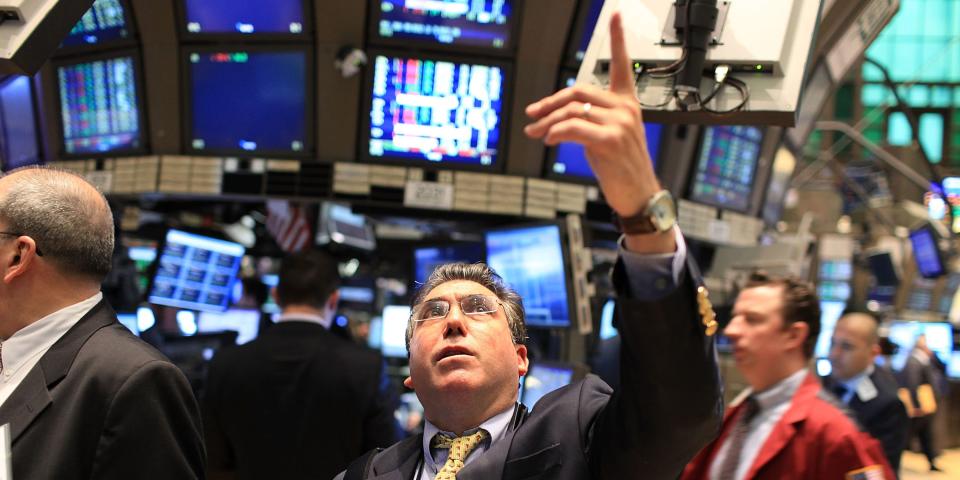The stock market just flashed an extremely rare signal that has a solid track record for strong gains ahead, Fundstrat says

An extremely rare signal flashed in the stock market on Tuesday, suggesting big gains ahead.
That's according to Fundstrat's Tom Lee, who highlighted a surge in the put-to-call ratio despite a jump in the S&P 500.
Since 1997, there have been only three instances when the put-to-call ratio surged above 1.0 on the same day stocks jumped 1%.
An extremely rare contrarian signal flashed in the stock market on Tuesday, and it suggests strong gains ahead, Fundstrat's Tom Lee said in a Wednesday note.
Lee highlighted that the put-to-call ratio surged above 1.0 on Tuesday, the same day the S&P 500 surged more than 1%. That's a headscratcher because the put-to-call ratio typically surges on down days in the stock market, not days when there are strong gains.
The put-to-call ratio is a technical indicator that helps measure investor sentiment. A measure of 1 for the put-to-call ratio indicates that the number of buyers of bullish call options is the same as the number of buyers for bearish put options. A measure of above 1 for the ratio signals that there are more put buyers than call buyers, suggesting investors are tilted more bearish than bullish towards the stock market.
"A surge in [the] CBOE put-to-call ratio generally happens on a down day. That is logical: markets trade down, investors seek to hedge, [so they] buy puts," Lee said. On Tuesday, the put-to-call ratio jumped from 0.64 to 1.35, according to data from YCharts. Meanwhile, the S&P 500 surged nearly 1.4%.
According to Fundstrat, since 1997, there have only been three other instances in which the put-to-call ratio spiked above 1 on the same day the S&P 500 was up more than 1%.
"The forward returns for equities is very good," Lee said of those three dates.
Those instances include February 1997, November 2008, and March 2020. All three dates saw significant up moves in the stock market over the next few months and year.
According to Lee, the S&P 500 delivered average forward returns of 3.7%, 17.5%, and 35.8% over the next three, six, and twelve months, respectively, with a win ratio of 100% for positive forward six-month and twelve-month returns.
That, combined with strong year-end seasonals, gives Lee confidence that the S&P 500 could surge to 4,500, or about 12% from current levels, by year-end.
Read the original article on Business Insider

 Yahoo Finance
Yahoo Finance 